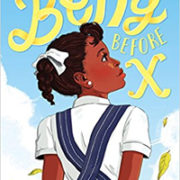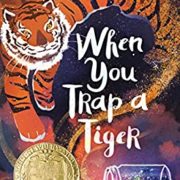Never Caught, the story of Ona Judge by Erica Armstrong Dunbar & Kathleen Van Cleve
In preparing for the library’s Black History Month celebration on Feb. 22, I chose to read Erica Armstrong Dunbar and Kathleen Van Cleve’s young readers edition of “NEVER CAUGHT: THE STORY OF ONA JUDGE.”
Ona Maria Judge was born into slavery around 1773 or 1774 at George Washington’s Mount Vernon to Betty, an enslaved woman, and Andrew Judge, a white indentured servant. Dunbar and Van Cleve tell the story of her birth, early life and eventual escape from her owners, George and Martha Washington.
As a young girl, Ona becomes one of Martha’s favored slaves, a fact that brings her to Philadelphia and New York with the Washingtons as George prepares to lead a young United States of America out of England’s shadow. While in Philadelphia, Ona meets free black people for the first time and learns about Pennsylvania’s Gradual Abolition Act, which enables enslaved people to be freed after six months if they move from another state to Pennsylvania. After she returns to Mount Vernon, freedom weighs heavily on her mind: “While she understood that some slaves at Mount Vernon looked at her with envy because she was Martha’s favored attendant, she now had seen for herself that there were black people who lived without being anyone’s slave, favored or not.” Her experiences in Philadelphia remain with her for several years until 1796, when she finally makes her escape.
Although Ona’s story is largely absent from our historical texts, the authors pull from a sparse historical record to construct an engaging story of a courageous and determined woman.
In the author’s note that precedes the story, Dunbar states that Ona’s story “will make you think differently about everything you have learned regarding American history.” While that is a tall order, I do believe that Ona’s story adds nuance to a very polished period of history.
In “Never Caught,” readers learn about the ways in which slavery shaped this nation in its infancy. Most importantly, we learn individual details about people who, thanks to Dunbar and Van Cleve, are no longer relegated to a distant, fading past. In addition to Ona Judge, readers learn about Hercules, an enslaved chef who was highly favored by the Washingtons, and Richard Allen, a free black preacher and abolitionist in Philadelphia.
Dunbar and Van Cleve do not make concessions for George and Martha Washington in regard to slavery. The authors note how they and their paid staff made a concerted effort to keep the Gradual Abolition Act out of the Presidential House, going so far as to rotate Ona and others between Philadelphia and Mount Vernon on a six-month basis to avoid emancipation. They acknowledge the gaps between the president’s comments on slavery and his actions. The authors are also blunt in their condemnation of slavery, stating, “Human nature was allowed no outlet in the emotional life of the enslaved,” and, “Slavery was brutal. Slavery was immoral.”
Acknowledging the sins of important historical figures can be challenging; at times, one may feel that they must choose between disregarding the person or their negative acts.
In “Never Caught: the Story of Ona Judge,” Dunbar and Van Cleve show how to discuss historical figures with nuance. George Washington was a revered military leader and president, and he also owned slaves. There is room in his legacy for both things to be true.
The book’s front and back matter are also worth mentioning. Dunbar and Van Cleve include a map of relevant places, a table of contents, a timeline, a newspaper interview with Ona Judge as well as a bibliography detailing the resources used in writing this book. The book is a captivating and important account of a woman largely absent from historical texts.
Finally, the young readers edition was adapted for middle school-aged readers. While it doesn’t shy away from the brutality of slavery, the authors manage to explain difficult ideas in an age-appropriate manner.
Find in catalog.











